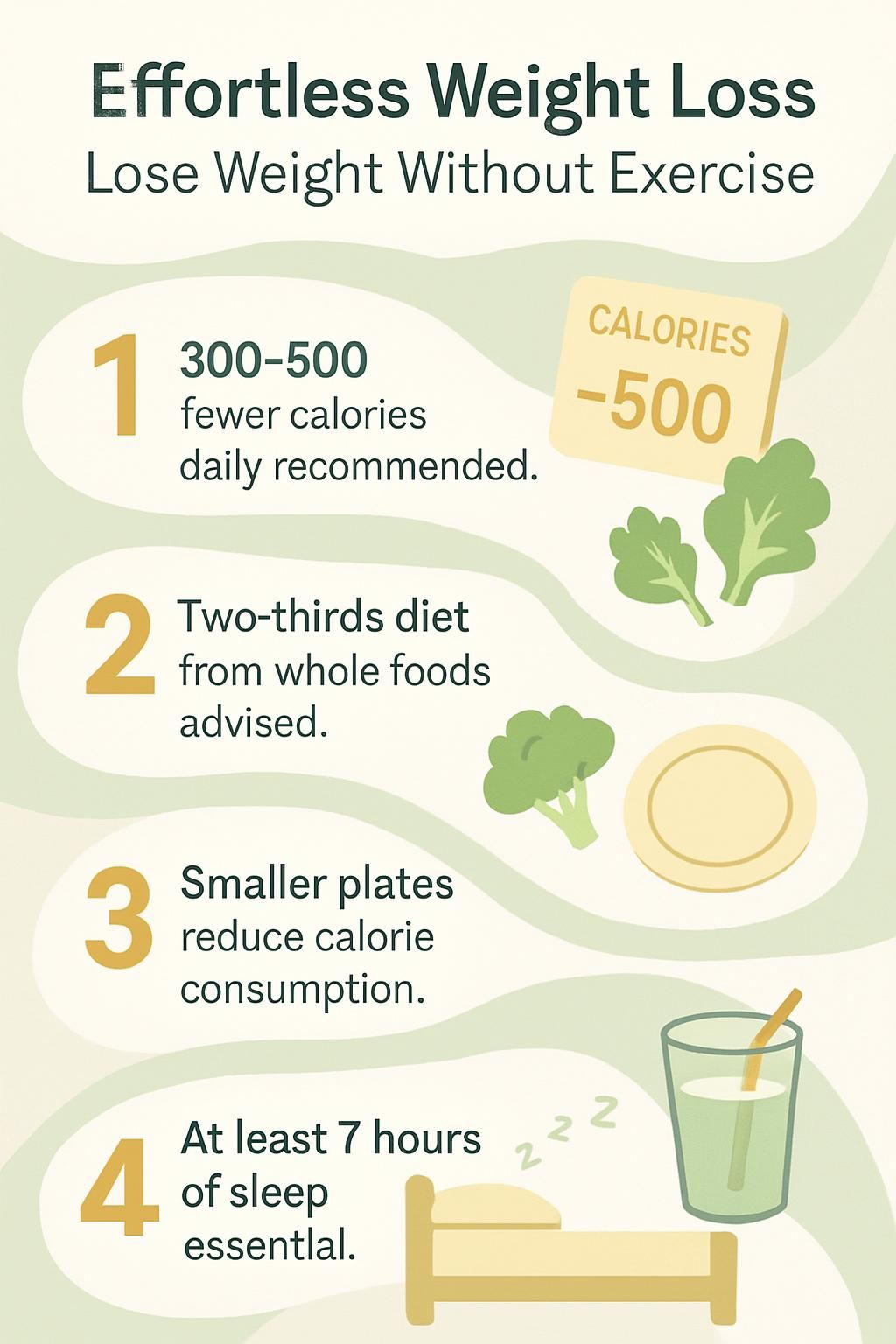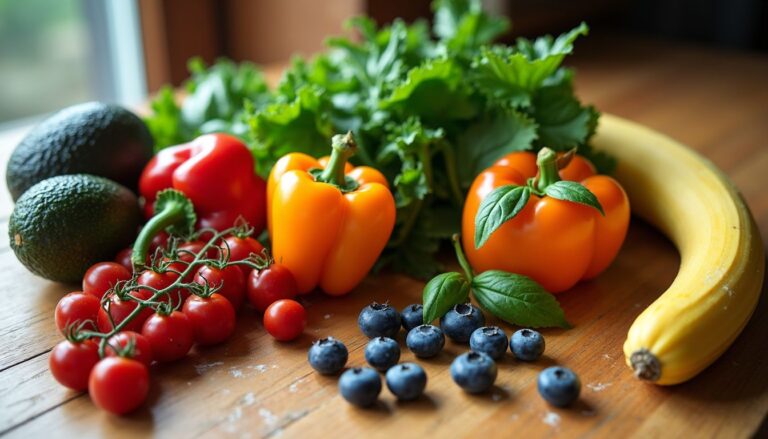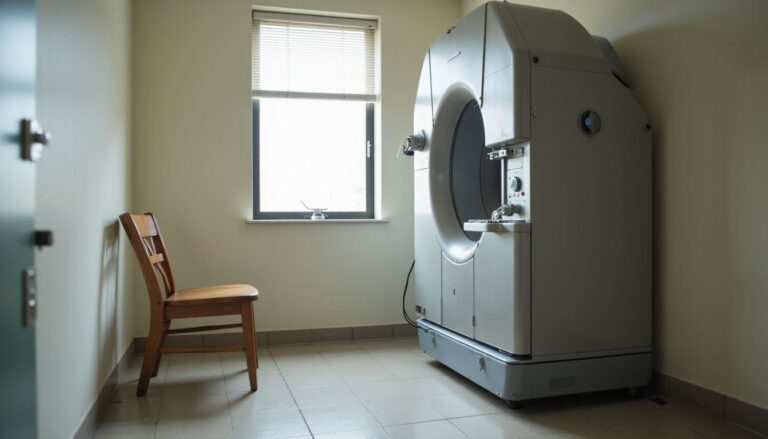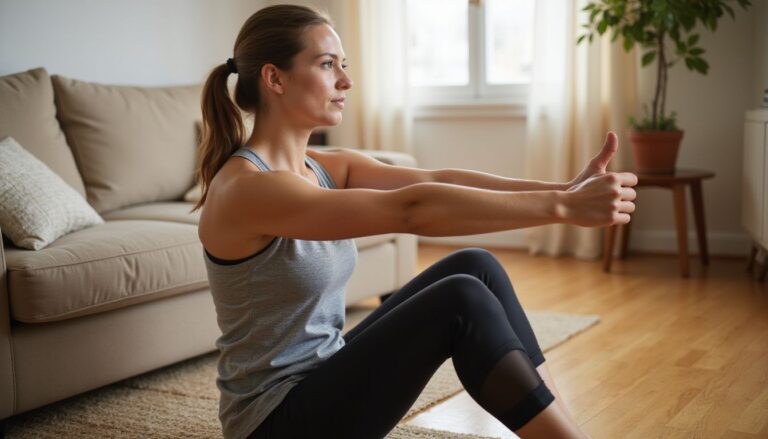Effortless Weight Loss: Lose Weight Without Exercise
Our Nutrition Assistant AI Suite will transform your body. You will lose fat, get toned, and build muscle. Gain confidence and optimal health.
Losing weight can feel hard if exercise is not an option. Maybe your schedule is packed or a health issue limits activity. The good news is this: you can lose weight without exercise by focusing on what and how you eat.
Research shows that diet has a larger effect on weight loss than workouts alone. In this guide, you will find clear steps to cut calories, choose filling foods, and build daily habits that last. Use these practical tips to make steady progress toward a healthy weight.
Key Takeaways
- Research from the Academy of Nutrition and Dietetics supports a safe goal of 300–500 fewer calories per day for steady weight loss without exercise.
- Eating mostly whole foods, with two-thirds of your plate from vegetables, fruits, beans, nuts, and whole grains, lowers empty calories and supports long-term control.
- Studies from Mayo Clinic suggest smaller plates can reduce calorie intake and help maintain a healthy body weight.
- Replacing sugary drinks with water can cut hundreds of calories daily. A 2015 study showed drinking one pint before meals reduces hunger and lowers intake.
- Quality sleep, at least seven hours, helps regulate leptin and ghrelin, the hormones that influence appetite, according to CDC guidance.

Understanding Weight Loss Without Exercise

It is possible to lose weight without exercise by creating a calorie deficit through food choices. Your body weight is shaped by how much you eat, the quality of your diet, and daily routines that influence appetite and metabolism.
What is a caloric deficit and how does it work?
A caloric deficit means you take in fewer calories than your body burns each day. To estimate your target, use calculators for Total Daily Energy Expenditure, or TDEE, and Resting Energy Expenditure, or REE.
TDEE reflects calories burned in a normal day based on age, sex, height, weight, and activity. REE is the energy needed to run basic body functions while at rest. Many dietitians recommend eating 300–500 fewer calories than your TDEE per day. This supports fat loss while protecting muscle and vitamins.
Severe restriction can cause fatigue and poor health, especially if you live with diabetes or heart disease. A registered dietitian can help you set safe calorie goals and a realistic weight loss plan.
Small, steady calorie cuts make weight loss possible even without workouts.
Other factors also shape progress, so do not focus on calories alone.
What factors affect weight loss without exercise?
Age, sex, height, and current weight change how many calories your body burns. If your Body Mass Index, or BMI, is 25 or higher, you are in the overweight range, and early changes can appear more quickly with diet shifts.
Diet quality matters more than exercise for losing weight without moving more. Build meals with fruits, vegetables, whole grains like brown rice or oats, lean protein such as beans or chicken, and plenty of dietary fiber. These choices crowd out refined foods that push calories up.
Stress and poor sleep raise hunger hormones like ghrelin and lower fullness hormones like leptin. People who sleep under seven hours often crave high sugar snacks and sweetened beverages.
Emotional eating can add extra calories fast. Obesity raises the risk of coronary heart disease, lung problems, type 2 diabetes, high blood pressure, fatty liver disease, and some cancers such as breast cancer. The American Heart Association notes that losing 5 to 10 percent of your starting weight can lower many of these risks.
Dietary Strategies for Effortless Weight Loss
Changing what you eat is the most direct path to weight loss without exercise. These strategies help you manage portions, reduce empty calories, and stay satisfied.
How can whole foods help with weight loss?
Whole foods like fruits, vegetables, beans, nuts, seeds, and whole grains are rich in nutrients and often lower in calories. The CDC suggests filling about two-thirds of your plate with these foods. Use the remaining space for lean proteins or dairy.
Four servings of vegetables and three servings of fruit per day add vitamins and minerals without excess calories. Choosing brown rice over white rice cuts calories and adds fiber, which helps digestion.
Simple swaps matter. Carrot sticks, apple slices, or a small handful of nuts usually beat candy or chips for fullness. I started trading chips for apples with peanut butter and felt satisfied with fewer calories.
Switching to plant-forward meals made portion control easier without counting every bite.
Next, learn how portion control makes day-to-day progress simpler.
What are effective ways to control portion sizes?
Portion control is a core way to eat fewer calories than you burn. Small changes add up.
- Use smaller plates for calorie-dense foods, as Mayo Clinic suggests, to help lower intake and reduce weight gain risk.
- Try portion-control plates. A 2021 study by Jayawardena R linked them with lower weight, BMI, waist size, and improved blood lipids.
- Measure food with cups or a scale to avoid guesswork.
- Fill half your plate with low-calorie, high-fiber vegetables for lasting fullness.
- Serve food in the kitchen instead of family style to limit seconds.
- Track portions with a food diary or app to stay aware of calories in and calories out.
- Set small action goals, like using a smaller bowl for cereal or pre-measuring nuts.
- Check hunger before plating. Mindful portions reduce snacking during TV or phone time.
- Choose water or unsweetened drinks to avoid liquid calories.
- Measure oils and sauces with spoons. These add up fast and are easy to overlook.
- Pre-portion snacks so hunger does not turn into a large, unplanned serving.
Why should I reduce sugary drinks and processed foods?
Sugary drinks like soda, sweet coffee, juice cocktails, beer, and wine add calories without fullness. These liquid calories can lead to weight gain before you notice.
Higher intake of sugary drinks raises risk for obesity, type 2 diabetes, and heart disease. A 2022 study by McGlynn N found that replacing high sugar beverages with water or low-calorie options led to weight and body fat loss.
Processed foods often carry extra sugars, sodium, and unhealthy fats. Fried snacks, pastries, and refined carbs spike blood sugar but leave you hungry soon after. Choosing whole foods supports heart health and long-term weight control.
Trade candy bars and chips for fruit, yogurt, or nuts. You will get more nutrients and stay full longer.
How do fiber-rich foods help me feel full longer?
Fiber slows digestion and helps you feel full. Viscous fiber, found in foods like beans, oats, Brussels sprouts, apples, and flaxseed, absorbs water and forms a gel in your gut. That gel delays hunger and reduces cravings after meals.
The Academy of Nutrition and Dietetics suggests 28 grams of fiber per day for women and 34 grams for men. Whole grains, beans, fruits, and vegetables help control appetite while keeping energy steady.
Adding these foods is a simple way to reduce calories without strict dieting or hard workouts.
How does drinking water support weight loss?
Drinking water before meals helps you eat less. In a 2015 study, people who drank about one pint, or 568 milliliters, before eating consumed fewer calories at the meal.
Research from Jeong JN in 2018 supports this effect on fullness. Swapping sugary beverages for water reduces daily calories even more.
Staying hydrated supports metabolism. Mayo Clinic notes that adequate water intake helps with weight management. General guidance suggests about 15.5 cups, or 3.7 liters, daily for men and 11.5 cups, or 2.7 liters, for women, from all beverages and foods.
I started drinking a large glass of water before each meal. Over a few weeks I felt full sooner, and smaller portions became natural.
Summary: Replace sugary drinks with water to reduce total calories. Drinking before meals boosts fullness. Proper hydration supports the body systems that burn calories.
Mindful Eating Practices
Mindful eating helps you notice true hunger and stop when you are satisfied. These simple skills make overeating less likely and support a healthy body weight.
How does chewing thoroughly and eating slowly aid weight loss?
Thorough chewing helps you eat less while still feeling content. Slow eaters often consume fewer calories and report more fullness. A 2018 study by Hollis JH linked slow eating and more chewing with lower BMI.
Try counting chews per bite or setting your utensil down between bites. Your brain needs about 20 minutes to register fullness signals. Slowing down gives those signals time to arrive.
I practiced setting my fork down after each bite for one week. I felt full quicker and reduced calories each day without feeling deprived.
Why should I avoid eating while distracted by phones or TV?
After you slow down, cutting distractions makes mindful eating easier. Screens pull your attention away from hunger and fullness cues.
Research by van Meer F in 2022 found that distracted eating increases calories at meals and across the day. The CDC and Mayo Clinic encourage screen-free meals to support better choices.
Focusing on the meal helps you notice portions, pick better foods, and stop when you are satisfied. That lowers risk for heart disease and type 2 diabetes over time.
How can I recognize my hunger and fullness cues?
Start each meal with a quick check-in. Ask yourself if your stomach feels empty or if you are eating from habit, boredom, or stress.
Use a food diary to rate hunger before and after eating on a 1 to 10 scale. Pause halfway through the meal to reassess. Aim to stop at comfortable fullness, not stuffed.
Chew slowly and keep phones and TV away during meals. People who practice mindful eating often choose more plant-based options and control portions more easily.
Lifestyle Adjustments to Support Weight Loss
Your daily routines can boost weight loss even if you sit most of the day. Small steps add up and make healthy choices easier to maintain.
How does adequate sleep regulate appetite and cravings?
Seven or more hours of sleep supports appetite control. Leptin, the fullness signal, rises with good sleep. Ghrelin, the hunger signal, increases when sleep is short. A 2022 review by Papatriantafyllou E outlines this link.
Short sleep also raises cravings for sweets and snacks. The CDC associates fewer than seven hours with higher calorie intake and trouble sticking to healthy choices.
Summary: Nightly rest steadies appetite hormones, reduces cravings, and supports diet choices that help you lose weight without exercise.
What are effective ways to manage stress and prevent emotional eating?
Stress can raise cortisol, a hormone that drives cravings for high calorie foods. Use simple tools to lower stress and protect your plan.
- Spot your triggers, such as a tough workday or conflict at home. Plan coping steps before cravings hit.
- Practice deep breathing, brief meditation, or short walks. These help reduce cortisol and urge eating.
- Lean on friends or family for support during hard weeks.
- Keep a journal of emotions and food choices. Patterns become clear fast.
- Prepare healthy snacks in advance for tough moments.
- If stress feels heavy or keeps going, talk with a health professional.
- Address stress before cutting calories, as Mayo Clinic suggests, so your plan does not fall apart.
- Try calming activities like reading, music, or time outside.
- If emotional eating persists, ask your doctor to check for medical issues that affect appetite.
I began taking quick walks after long meetings and kept water nearby. That small shift cut my urge to snack and saved hundreds of calories each week.
Why is planning meals and snacks ahead important?
Planning meals improves diet quality and lowers the risk of obesity, according to public health guidance. Prepping food makes it easier to choose whole foods instead of processed options or sugary drinks.
Cooking at home and packing snacks support portion control. Balanced, ready-to-eat meals help you maintain a manageable calorie deficit without feeling rushed or deprived. Keeping a water bottle handy reinforces smart beverage choices.
How does cooking at home help control ingredients and portions?
Cooking at home gives you control over ingredients and serving sizes. You decide the oil, salt, sugar, and cooking method. Mayo Clinic encourages home cooking to support healthy weight loss.
People who cook more at home tend to eat fewer calories and less processed food. Measuring portions while cooking reduces the risk of overeating.
When I started packing my own lunches, I chose lean protein and lots of vegetables, and I stuck with water. I felt full longer and kept calories in a healthy range.
Home cooking also supports mindful eating, which makes results more sustainable.
Hidden Calorie Awareness
Hidden calories often slip into meals and snacks. Spotting them helps you keep a true calorie deficit and steady progress.
How can I avoid calorie-dense foods and drinks?
Cut sugary drinks, heavy snacks, and alcohol to reduce hidden calories. Choose water or unsweetened tea instead of soda or flavored coffee. Use smaller plates and measure portions to keep intake in check.
Fried foods, sweets, and white bread carry many calories with few nutrients. Plan a shopping list and stick to it. Choose fruits, vegetables, lean meats, and whole grains to support your goals.
Limit added sugars and saturated fats. These steps make healthy choices easier day after day.
What “healthy” foods may still be high in calories?
Some foods marketed as healthy still pack many calories. Granola bars and smoothies may include added sugars or extra fat. Nut butters are nutritious but dense, about 190 calories for two tablespoons. Oils like olive or coconut contain about 120 calories per tablespoon.
Low-fat or fat-free products often add sugar to replace taste. Portion size matters for dried fruit, hummus, and nuts. A small handful of nuts can be 160 to 200 calories, and one-fourth cup of dried fruit can top 100 calories.
I once switched from peanut butter to almond butter thinking it would help. The extra calories surprised me. Reading labels can prevent these bumps in the road.
Non-Exercise Physical Activity
You burn calories through small movements in daily life. These actions help your weight loss plan even without a formal workout.
What light movements can help burn calories without exercise?
Light movement throughout the day lifts your total burn. Mayo Clinic encourages adding motion to your routine for weight management.
- Take the stairs instead of elevators to raise your heart rate.
- Stand during calls or virtual meetings to use more energy than sitting.
- Walk during TV commercials to add minutes of activity each hour.
- Park farther from the door to build in extra steps.
- Do light housework like dusting, sweeping, and washing dishes.
- Garden, water plants, or pull weeds for gentle outdoor movement.
- Add five-minute stretch breaks each hour to stay alert and limber.
These small actions are easy to fit around a busy day. Next, see how constant tiny movements raise your total calorie burn.
How can fidgeting and small movements increase calorie burn?
Fidgeting, foot tapping, and pacing during calls all count. These are part of Non-Exercise Activity Thermogenesis, or NEAT, the energy you use for everything outside sleep, eating, and formal exercise.
Increasing NEAT helps create a calorie deficit. Research shows frequent movers may burn hundreds more calories per day than people who sit still.
I began standing more during work and noticed changes within weeks. Short stretch breaks and brief walks between tasks add up over time and support weight loss without workouts.
Benefits of Losing Weight Without Exercise
Weight loss from diet and daily habits can improve your health and quality of life. Small changes can lead to meaningful results.
What health benefits come from losing weight without exercise?
Losing 5 to 10 percent of your starting weight can lower high blood pressure, reduce risk for heart disease, and improve blood sugar control. Many people also see improvements in fatty liver disease and breathing issues.
Mayo Clinic notes that health gains from modest weight loss are significant. Eating patterns that support weight loss can also lower the risk of certain cancers.
I lost ten pounds through better food choices and saw better energy and improved lab results. Even small progress can produce real health wins.
How does weight loss improve energy and mental clarity?
Carrying less weight reduces strain on joints and muscles. Everyday tasks feel easier, and energy improves. Mayo Clinic reports that healthier weight is linked with better mood and vitality.
Fiber-rich foods and fewer processed snacks support steady blood sugar, which can boost focus. Better sleep often follows weight loss, which sharpens thinking and reduces fatigue.
I swapped soda for water for a few weeks and noticed clearer afternoons at work. My focus improved and snacks felt less tempting.
Why is non-exercise weight loss easier to maintain?
Many people find diet-based changes easier to sustain than strict workout plans. Whole foods, portions you can see, and mindful eating fit into daily life without a gym.
Research suggests healthy eating patterns promote long-term maintenance more than short bursts of exercise do. Prepping meals ahead helps you follow the plan even on busy days. Support from family or a healthcare professional can keep you on track.
Common Mistakes to Avoid
Small missteps can slow your results. Knowing these pitfalls helps you stay on course and avoid frustration.
Why is skipping meals or extreme calorie restriction harmful?
Skipping meals or slashing calories too low can backfire. Your metabolism can slow, and your body may break down muscle for energy. Mayo Clinic warns that drastic cuts are unsafe and unsustainable.
Hunger often rebounds later, which can trigger overeating. Aim to reduce 300–500 calories per day from your TDEE instead. This approach protects muscle, supports energy, and encourages steady fat loss.
What are the risks of relying on fad diets?
Fad diets often cut entire food groups, which can cause nutrient gaps. Fast results may fade quickly, and weight can bounce back.
Severe restriction can disrupt metabolism and make weight maintenance harder. Mayo Clinic favors long-term habits over quick fixes. Professional guidance helps keep your plan safe and effective.
Keeping an eye on hidden calories also supports your effort to lose weight without exercise.
How can I avoid underestimating liquid calories?
Liquid calories stack up fast. Soda, energy drinks, flavored coffee, beer, wine, and even large smoothies can add hundreds of calories without filling you up.
The CDC and Mayo Clinic advise replacing high calorie drinks with water or low calorie options. Track every beverage in your food diary, including juice and sweetened teas. Many people are surprised when they total a week of drinks.
Frequently Asked Questions
These quick answers can help you move forward with confidence.
Can I lose weight quickly without exercise?
You can lose weight without exercise by eating fewer calories than you burn. A safe pace is about 1 to 2 pounds per week, according to major medical sources.
That usually means cutting 500 to 600 calories per day from your usual intake. Trying to drop 20 pounds in a month is risky and can lead to muscle loss and nutrient gaps. I tried a severe cut once and felt tired and irritable. A steady plan worked far better.
How many calories should I consume for weight loss?
Use a TDEE calculator that asks for age, sex, height, weight, and activity level. Then eat 300 to 500 calories less per day than that number for gradual fat loss.
Many adults do well within 1,200 to 2,000 calories daily, depending on size and activity. Going too low can cause fatigue and nutrient issues. Track your intake with an app or food diary. For personal targets or medical concerns, consult a registered dietitian or your clinician.
When to Consult a Healthcare Professional
If progress stalls or symptoms arise, medical input can protect your health and guide next steps.
When should I seek help if weight loss stalls or symptoms appear?
See a healthcare provider if your weight plateaus for several weeks despite a calorie deficit and healthy habits. New symptoms like fatigue, muscle aches, hair loss, or lightheadedness also need attention.
Mayo Clinic advises revisiting your plan with a professional to rule out underlying issues. Your clinician may order labs to check thyroid function or other causes of stubborn weight changes.
How can a healthcare professional help rule out medical conditions?
A clinician can test for thyroid disorders, insulin resistance, and other metabolic problems that affect weight. Blood work can identify hormonal issues or nutrient gaps.
Routine check-ins help catch problems early, especially when you are changing your diet without exercise. A registered dietitian can build a plan that matches your health history and goals. Professional support improves safety and increases the chance of long-term success.
Conclusion
Losing weight without exercise is realistic with smart food choices and daily habits. Focus on whole foods, portion control, and water instead of sugary drinks. Practice mindful eating to notice hunger and fullness. Sleep seven hours or more and manage stress to keep cravings in check.
Track your progress with simple tools like a food diary or BMI chart. If you live with a medical condition or plan major changes, talk with your doctor or a registered dietitian first. Steady, sustainable steps lead to lasting weight loss and better health.
FAQs
1. How can I lose weight without exercise?
Weight loss without physical activity is possible by reducing calorie intake, choosing nutrient-dense foods, and controlling portion sizes. Studies show that people who track their food choices often see better results in managing body mass.
2. What are effective strategies for effortless weight loss?
Eating more protein-rich foods helps you feel full longer and may reduce cravings. Drinking water before meals can also lower calorie consumption. Research from the National Institutes of Health suggests mindful eating leads to healthier habits and gradual fat reduction.
3. Is it safe to lose weight without working out?
Yes, many people safely lose pounds through dietary changes alone if they maintain balanced nutrition and avoid extreme restrictions. The American Heart Association recommends focusing on whole grains, fruits, vegetables, lean proteins like poultry or fish, and healthy fats such as olive oil.
4. Can personal experience support these methods?
After tracking my own meals for two months using a simple journal, I noticed smaller portions became routine; this led to steady progress in reaching my target size even with limited movement due to an injury.
Summary: Reducing calories through smart food choices supports weight management when exercise is not possible or preferred. Evidence shows that mindful eating practices combined with nutritious options help achieve lasting results while maintaining health standards set by leading organizations.







